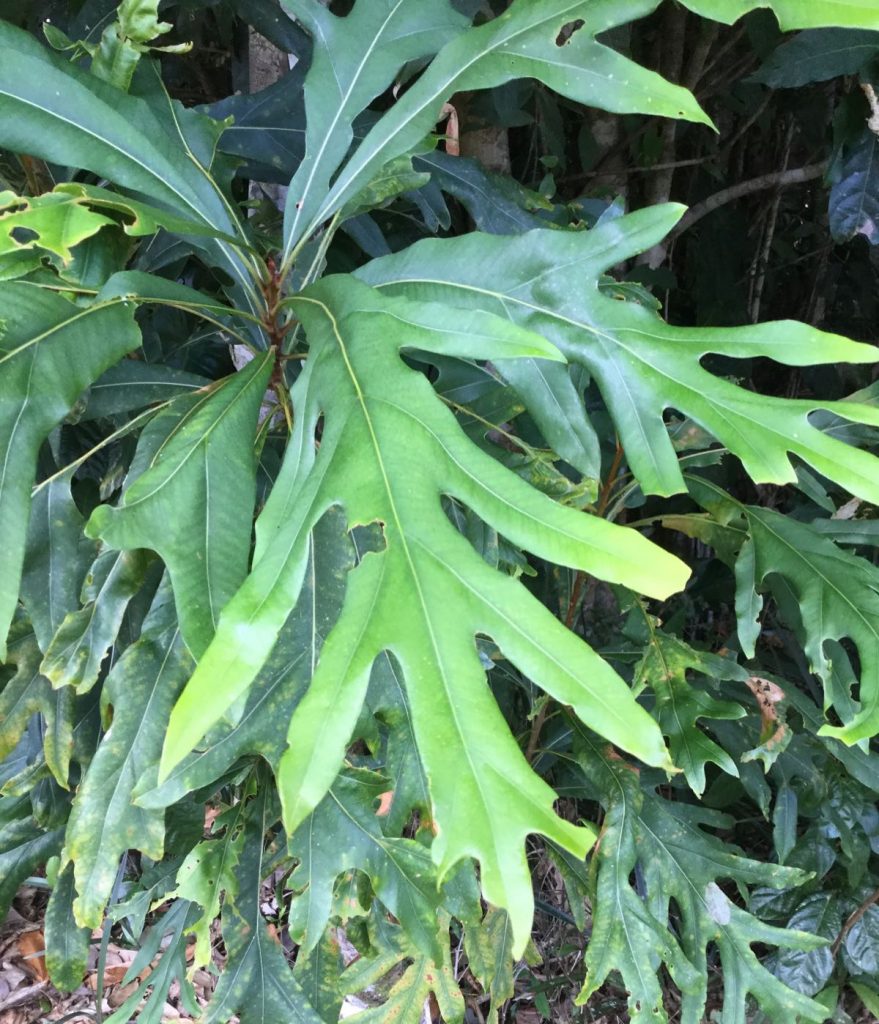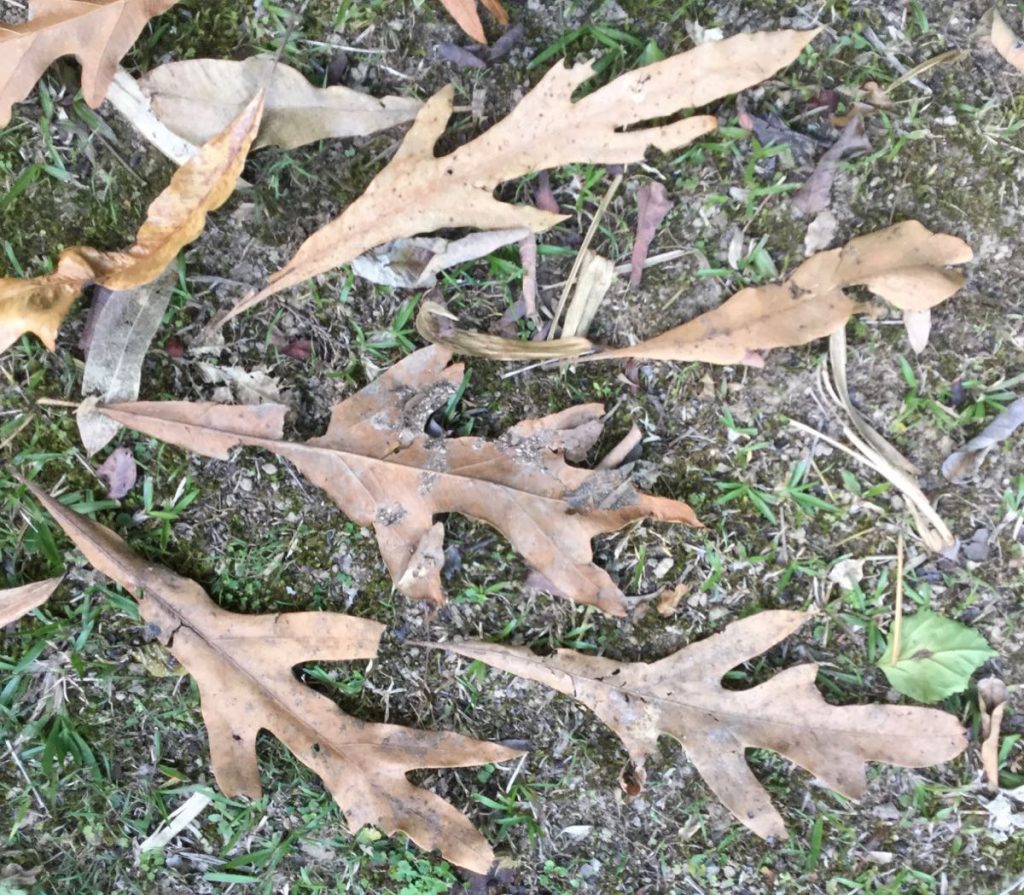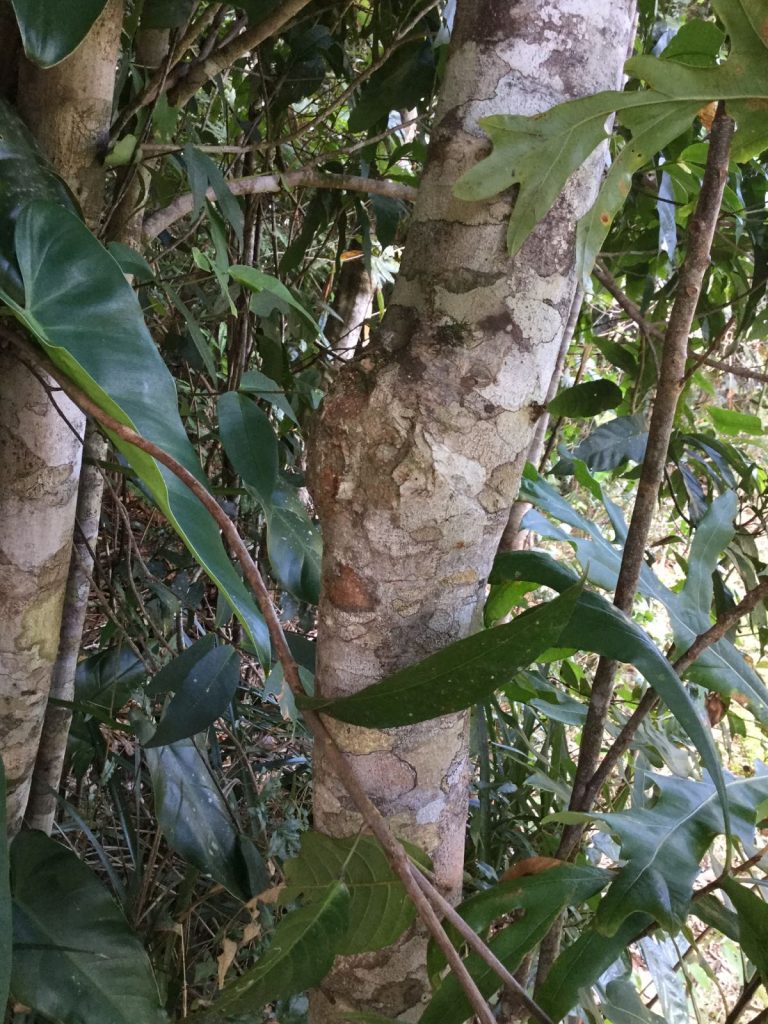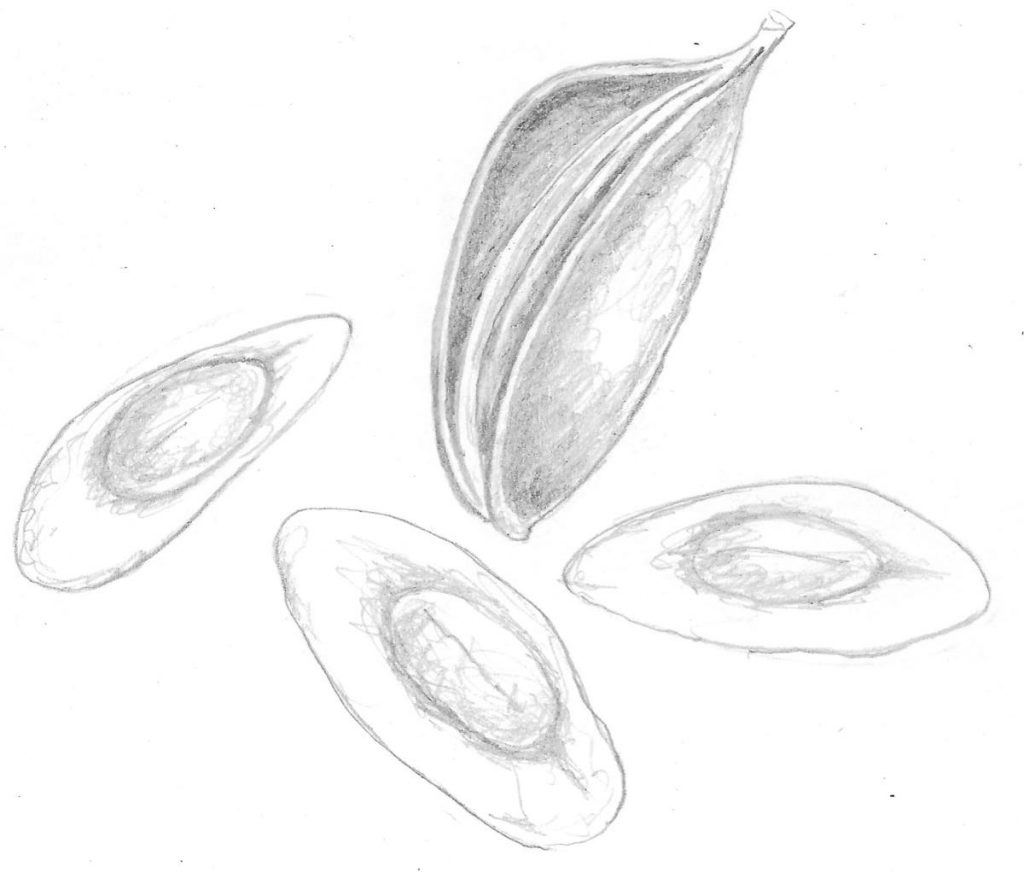Darlingia darlingiana (Silky Oak)
Have you ever been curious about the large leaves, shaped roughly like dinosaur footprints, commonly seen amongst the leaf litter on the forest floor? These belong to the Darlingia darlingiana, also known by the common names of Silky Oak, Brown Silky Oak or Rose Silky Oak, a handsome tree which can grow to a height of 30 metres. The common name of ‘oak’ originates from the oak-like grain in its wood, which is a dark red lace-like pattern. The tree was originally named after Charles Darling (1809-1870), Governor of Victoria. Distribution of this tree is from the Cooktown area to Paluma, at altitudes between 0 and 1,150 metres.
The leaves of Darlingia darlingiana are large: 70-500 mm long x 20-140.5 mm wide and may be lobed or unlobed. Juvenile leaves tend to be heavily lobed which gives them the ‘dinosaur footprint’ appearance. As they age prior to dropping, the leaves lose their bright green pigmentation and look striking in hues of red, orange and yellow, before fading to a coppery brown.



Darlingia has a dense crown of large leaves and conspicuous, strongly scented flowers which bloom from May to November. Prominent spikes or racemes of cream or white flowers are held at the ends of the branches and attract a variety of nectar and insect-eating birds. Many people find the scent of the flowers unpleasant. The fruit which follows, from November to January, are olive-green to brown leathery capsules, measuring 40-70 mm x 20-30 mm. These split along one side only, (like a mussel shell), to release several winged seeds, around 40-60 mm in size. A sketch of the seed pods is shown below.

There are many of these attractive trees in and around Paluma. Look for the distinctive green leaves in the canopy and also the aged brown leaves (dinosaur tracks!) on the forest floor next time you take a walk around the village.
Text, Photos and Sketch by Colwyn Campbell
